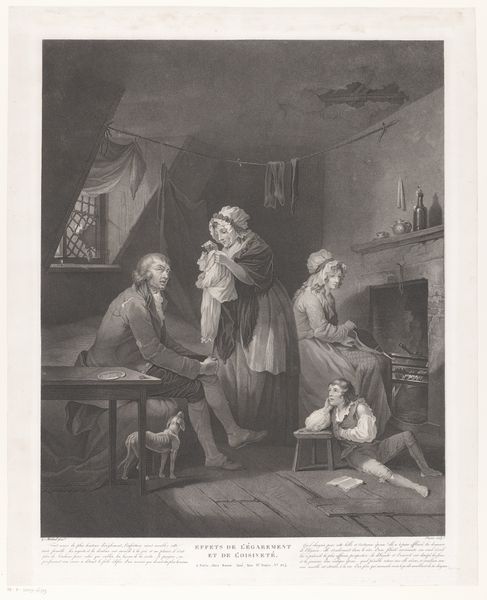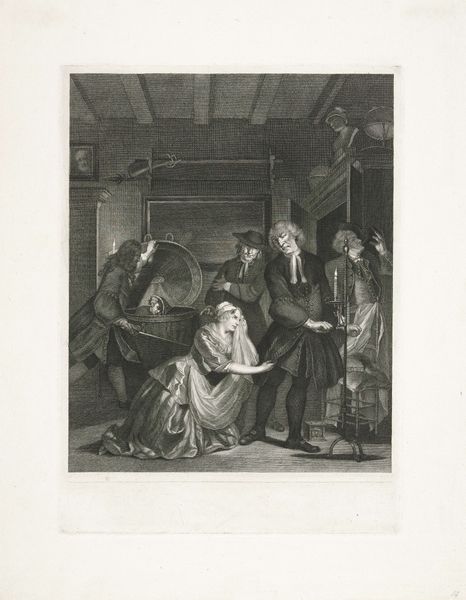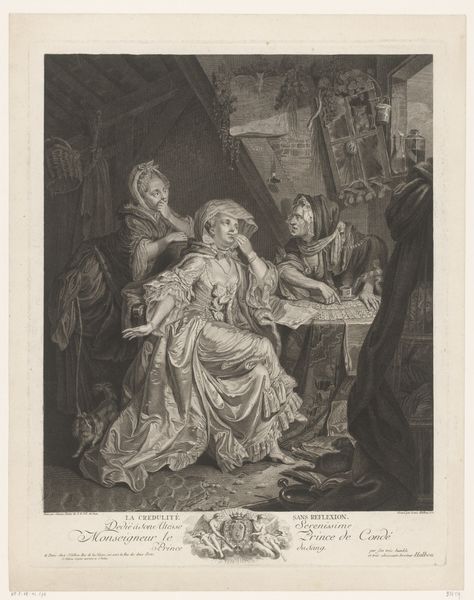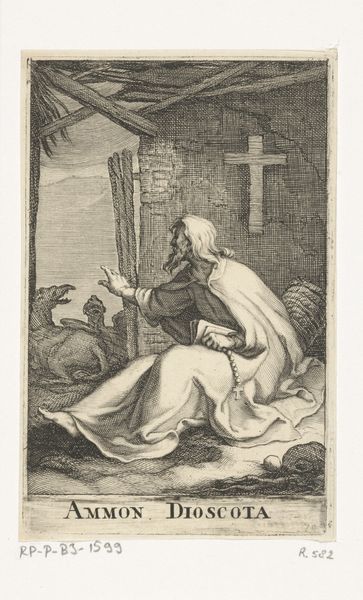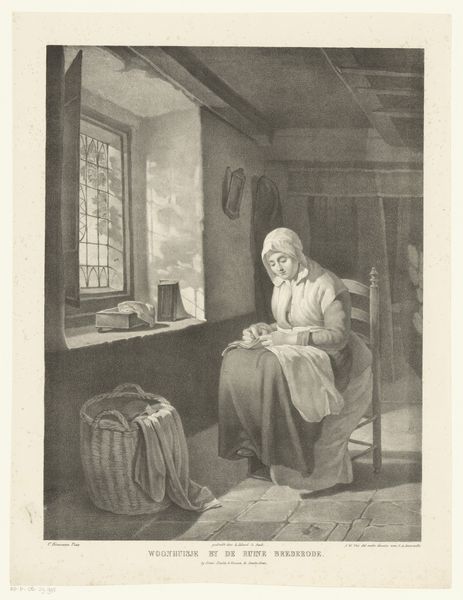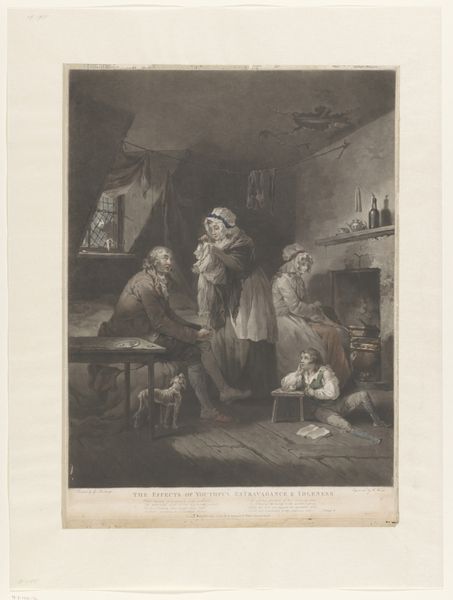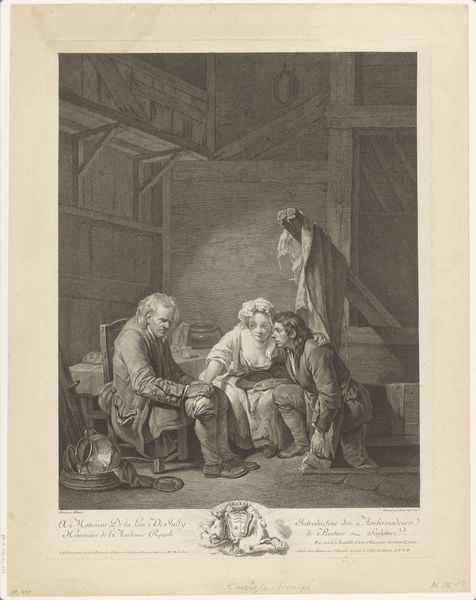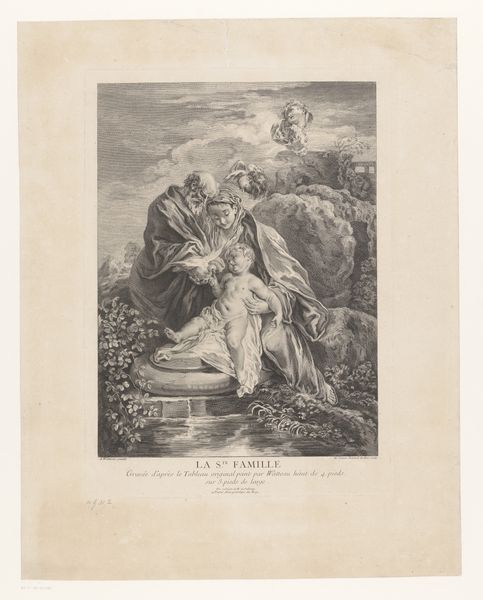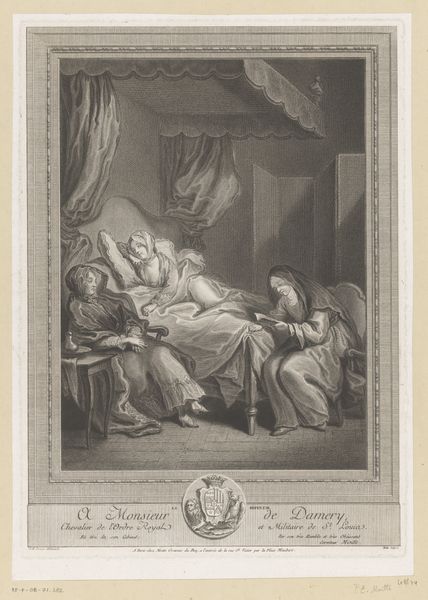
Dimensions: height 548 mm, width 372 mm
Copyright: Rijks Museum: Open Domain
Editor: So, here we have L. Angélique Martinet's engraving, "H. Gregorius dicteert zijn preken," from 1770. It's a print, fairly detailed, showing Saint Gregory dictating his sermons. What I find fascinating is how much emphasis is placed on the physical process of creating religious texts. What catches your eye? Curator: Well, as a materialist, I am drawn to precisely that emphasis on process you noticed. Consider the labor embedded in each stage: the creation of paper, the mixing of ink, the engraving itself. Martinet is highlighting a chain of material production essential for disseminating religious ideology. How might the economics of printmaking at this time have influenced the circulation of ideas, both religious and secular? Editor: That’s a compelling point. It makes you think about how accessible or restricted the information might have been based on the cost and availability of printed material. Do you think Martinet is commenting on that directly? Curator: Perhaps not explicitly. However, by portraying the scene as one of skilled craft, she draws attention to the means by which the Church propagates its doctrines. The engraving technique itself becomes a metaphor for the standardization and mass production of belief. And let's consider Martinet's position within this system as a female engraver navigating a male-dominated field. What challenges do you think she might have faced in accessing materials and recognition? Editor: Wow, that’s something I hadn't considered. It changes how I see the piece, knowing it’s from the perspective of a woman in that industry. I was initially just focused on the religious aspect. Curator: Exactly. It's crucial to understand how art is produced, consumed, and valued within its specific historical context, and to always examine how power relations are encoded into the very materiality of art. Editor: I learned a lot, and I’ll never look at an engraving the same way again! Curator: Wonderful! The point is not to debunk the religious narrative, but rather to ground it in the material realities of its creation and distribution.
Comments
No comments
Be the first to comment and join the conversation on the ultimate creative platform.
